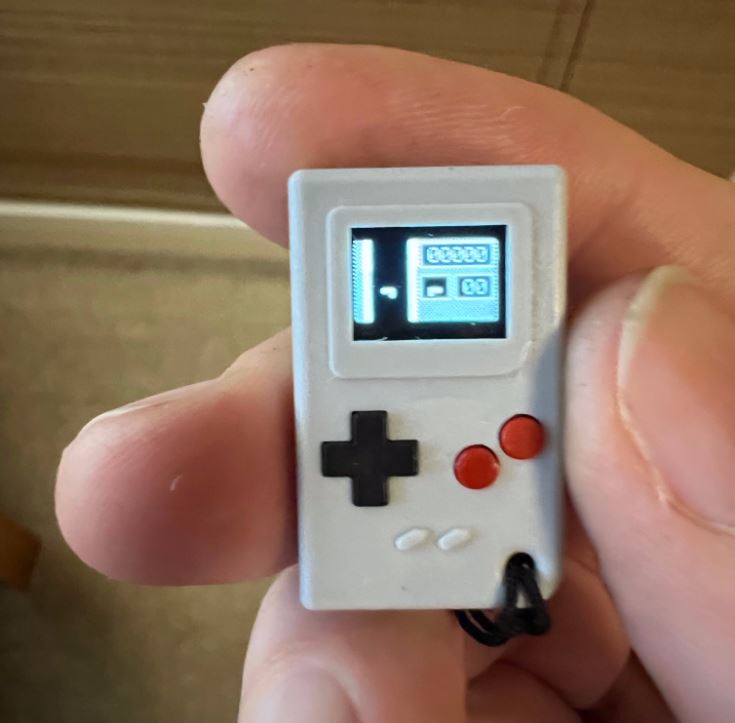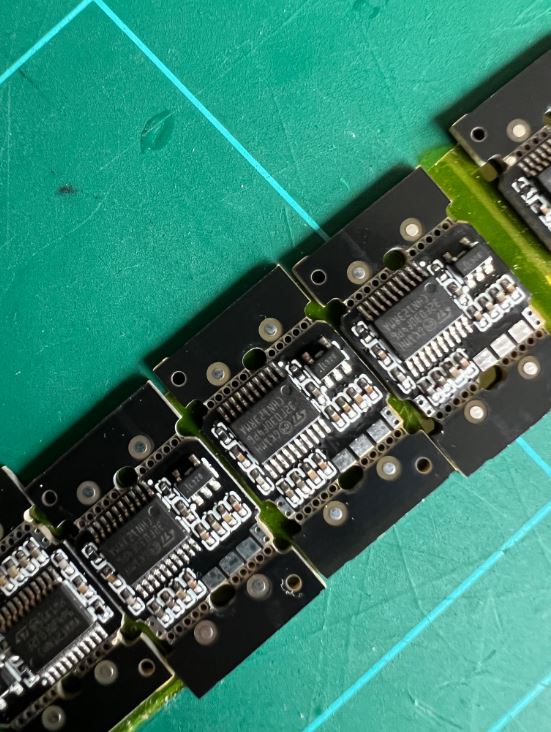James Brown’s Lego Brick Computer!
James Brown loves dabbling in strange yet unique inventions, and he’s pretty good at it too. And it’s not just any Lego brick, for that matter. James picked out a suitable Lego Brick that had the likeness of a computer display and a resin-poured semi-transparent version of the sloped Lego brick. If you’re old enough, you might have seen this very Lego brick when you made computers out of it inside of a flimsy Lego spaceship. The three sets of sloped Lego brick computers feature a radar scanner, an interactive Death Star Trench that activates when you touch the Lego studs, and an even some buttery smooth scrolling text on the miniature display. A video was uploaded by James Brown quite recently showcasing clips of the Lego Brick computer to Twitter. The bricks activate when fitted to a long black Lego Brick that probably features its own set of computer parts to activate the sloped Lego brick computers, or it’s probably a normal lego brick, and all the internals are housed within the Sloped Lego brick computers to turn them on. Don’t know exactly? Scroll down to find out.
— James Brown (@ancient_james) June 7, 2022 Taking a look at the internals, we get to see that the whole thing is actually powered by Lego bricks, too, for that matter. Inside the Lego brick are a 9-volt battery box assembly, and the bricks themselves feature electrical contacts that Lego, unfortunately, discontinued back in the 90s. The microcontroller inside of the Lego brick computer isn’t all that powerful, but it boasts enough processing power to run the 72 x 40 pixel OLED screen. As for the microcomputer, it’s attached to an STM32 microcontroller that powers the 48MHz Arm Cortex-M0 processor that runs the whole Lego brick computer. Aside from that, it features 16K of flash. But what’s special is the code that generates the visuals of the display. Doom on the Lego brick computer is actually a live video stream to the Lego micro PC and now for the code. It’s all procedurally generated, and James Brown actually wrote the whole code for the tiny Lego brick computer himself.
— James Brown (@ancient_james) June 11, 2022
Lego Brick Computer Journey So Far
He wasn’t originally planning to make the Lego brick computer initially, but brainstorming and the manufacturing of the individual parts allowed him to hit upon the idea for the Lego micro PC, and it seemed like it was begging to be manufactured. But how did this plan all start? Well, it all started when the Weta Workshop Graphics Engineer was casually browsing AliExpress to find some strange and unique items for sale, and he got exactly what he was looking for. He managed to find some rather inexpensive 0.42-inch OLED screens. He figured he could use them in a future project which is now the Lego brick computer. He was looking at an entirely different project from the get-go as he thought to himself that the displays were small enough to fit inside mechanical keycaps. He was well on his way to making a mini OLED keycap mechanical keyboard, but the project seemed to be time-consuming, slow, and cumbersome. “I sort of ordered a batch of screens just to have them sitting there making me feel guilty,” – James Brown But his direction changed rather quickly when something arrived at his doorstep. He had gotten his hands on an order he had long forgotten about. In the package was a miniature Gameboy for ants! While reviewing the product, he pondered on some thoughts and wondered what it would be like if each key had a microprocessor inside of it too. Later that day, he realized he’d seen a computer of the same size years ago. It was in the form of a single-sloped Lego brick computer with a sticker on the slope in some space-themed Lego sets. So, with the idea in mind, he started to sketch out the whole plan for the project. And after the initial phases, he was surprised to find out that the idea would actually work out. And it was definitely crammed inside as the single Lego brick computer rests within a housing as big as 9 x 8 mm. And the space between the Oled screen and the front surface of the brick is just under 0.1 mm. He went on the design the circuit board for the whole project in a form factor that would fit snug and tight. And he did it all in a single day. He structured all of the components and sent out the design to a board manufacturer, and he got five miniature boards for just 40 dollars, including shipping. On another note, it’s pretty cheap to manufacture your very own PCB these days. What a time to be alive! As for the hardest part of the build, it was just soldering battery contacts to the bottom of the black Lego Brick. James wasn’t serious about the project or expected it to gain the traction that it has now, as it was meant to be nothing but a gag. So, you’d expect to stick it inside of a Lego brick and call it a day, right? Well, that’s not quite how it was done. Brown had to make the bricks out of semi-transparent resin instead of actual Lego bricks. He didn’t nail the Lego bricks on his first try. James made sure to fill in the brick’s space with soft silicone so that the resin wouldn’t seep into the areas where the electronics were meant to be housed. But the story doesn’t end there. After he went viral on the internet, he made more improvements to his Lego Brick Computer design. He make-shifted a crude touch sensor by running a pair of wires through the metal studs. He went ahead and developed code for the X-Wing Computer and an Elite ship renderer in C language to showcase the beautiful low poly frames. To get rid of some of the extra glow, he added a layer of black lacquer, and he’s personally happy with how the overall finish turned out.
Lego Brick Computer 2 Coming Soon?
James is ready to develop the second iteration of the Lego brick computer, with the first iteration being out for just a mere few days. He’s improved the design by adding in a 3D circuit board that has all the bells, and whistles like a USB port for programming in contrast to the serial debug pins, better capacitive touch hardware integrated into the board itself, and on-board battery contacts. The new design is capable of accurately detecting finger movements around the brick stud’s surface area. Brown is pretty passionate when it comes to his projects, and he’s not just done with streaming Doom to the STM32 processor in the form of a video over those flimsy debug wires. He’s redesigned the new board to house a Raspberry Pi RP2040 microcontroller, and do you know what that means? The Lego brick computer two could actually become capable of playing Doom. He’s not yet done with the improvements. The fanatic stated that he’s looking into an IMU to integrate motion controls. So, with the Lego brick computer being a hit and a second iteration in the works, is it possible that consumers might get their hands on this as a retail product? James hasn’t opted out of the opportunity, but it will take a while before he goes public with his creation. But he’s still planning to develop and create some of these for his close friends and acquaintances. Still, he’s still not sure about licensing, certification, manufacturing, and all the complications associated with trying to develop the Lego brick computer as a retail product. Surely, it’s bound to strike a cease and desist letter from the Lego group for manufacturing and plagiarizing Lego’s sloped brick and distributing it for profit, hypothetically. Obviously, he won’t be selling a sloped brick with the words Lego imprinted on the studs as that would lead to catastrophe, that is if he gets around to manufacturing the Lego brick computers on a mass scale. Then there’s the problem of sourcing a rechargeable battery for the supposed product before he considers going into manufacturing because not everyone has vintage Lego equipment from the 80s and 90s. He definitely wants to push the limits on his product, and we hope he succeeds in his venture. We also hope Lego doesn’t strike a lawsuit against him in court in the event he proceeds with his plans. All-in-all, the Lego brick computer is an awesome tiny creation, and we can definitely see ourselves fiddling around with it. Hopefully, James might release a newbie-friendly version of the Lego brick computer for fans to enjoy and play around with. Till then, we’ll have to wait and see. Time will tell. That’s it for the Lego brick computer. Are you looking forward to future editions of the brick computer? Let us know in the comments below. We upload daily on Appuals, so stay tuned for more. Till then, see you later and goodbye!



